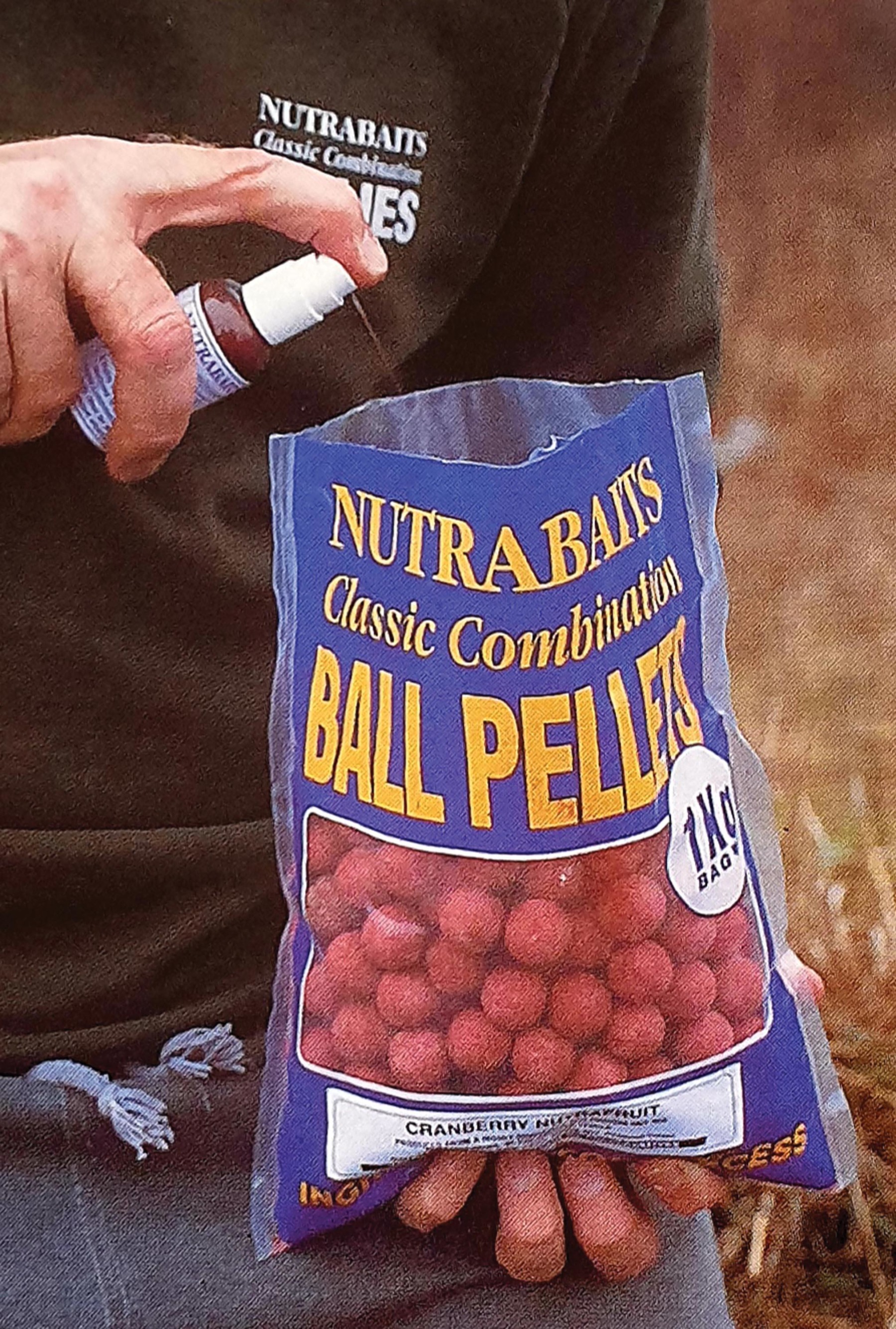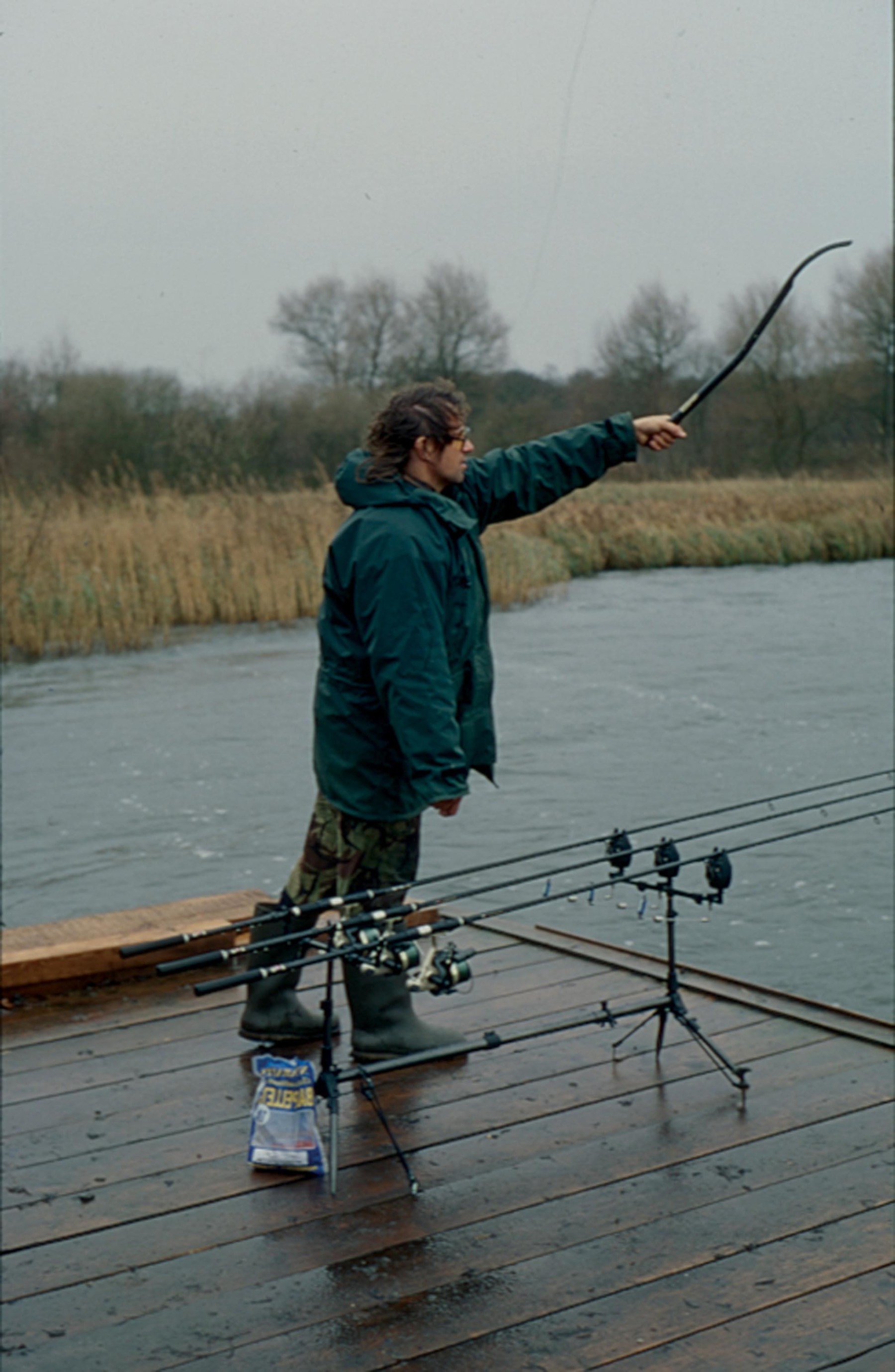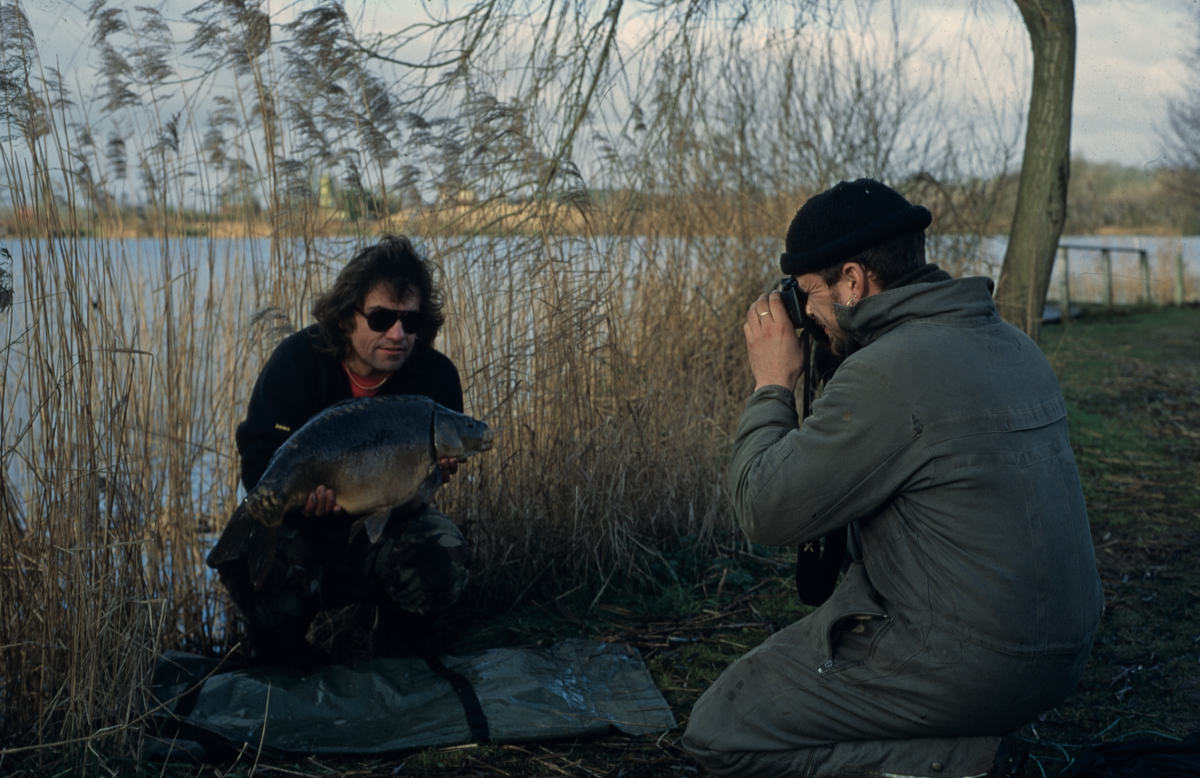
Forgotten methods of the 90s
Julian Cundiff looks back at methods from a couple of decades ago… it seems that those Norfolk boys were on to something!
CARPOLOGY: When, and from whom did you first hear about this method of scalding trout pellets and wrapping them around the lead?
JULIAN CUNDIFF: “To be honest, I’d known about it from the early nineties. A number of my friends would flip-flop between ‘proper carp fishing’ and match fishing, and this was often their go-to method (no pun intended) in competitions. Also, being involved in the carp fishing industry, particularly through writing Carpworld and Crafty Carper articles, I was aware of it. I’d certainly seen it catch the better fish too - or should I say ‘bigger’ fish. The first time I saw it as a successful method for carp of ten to twenty-five pounds-plus with my own eyes however, was in December 1997 at Catch 22 at Lyng, Norfolk.”
CARPOLOGY: How successful was the method when you used it? Wasn’t it your own to-go approach on Catch 22 during your time there? What years did you fish the lake?
JULIAN CUNDIFF: “It was the method at the time, although I didn’t know it. I’d been writing my Angling Times carp column since 1994 and once Kev Green got involved - he took over from Michelle Danielle - he started to shake things up a bit. Unlike today, there were few good, local winter waters available to me and with a weekly column to write, the period between December and March was hard going ‘up north’, action-wise. Brian Skoyles and Kev Green had fished Catch 22 in the colder months, Brian being a Norfolk boy, and thought a trip or two there would liven my column up a bit. To start with, my preferred approach was a delicate presentation, high-attract hookbait, ball pellet stringer etc., but I soon learned, and from early 1998 to 2000 it was my only approach.”
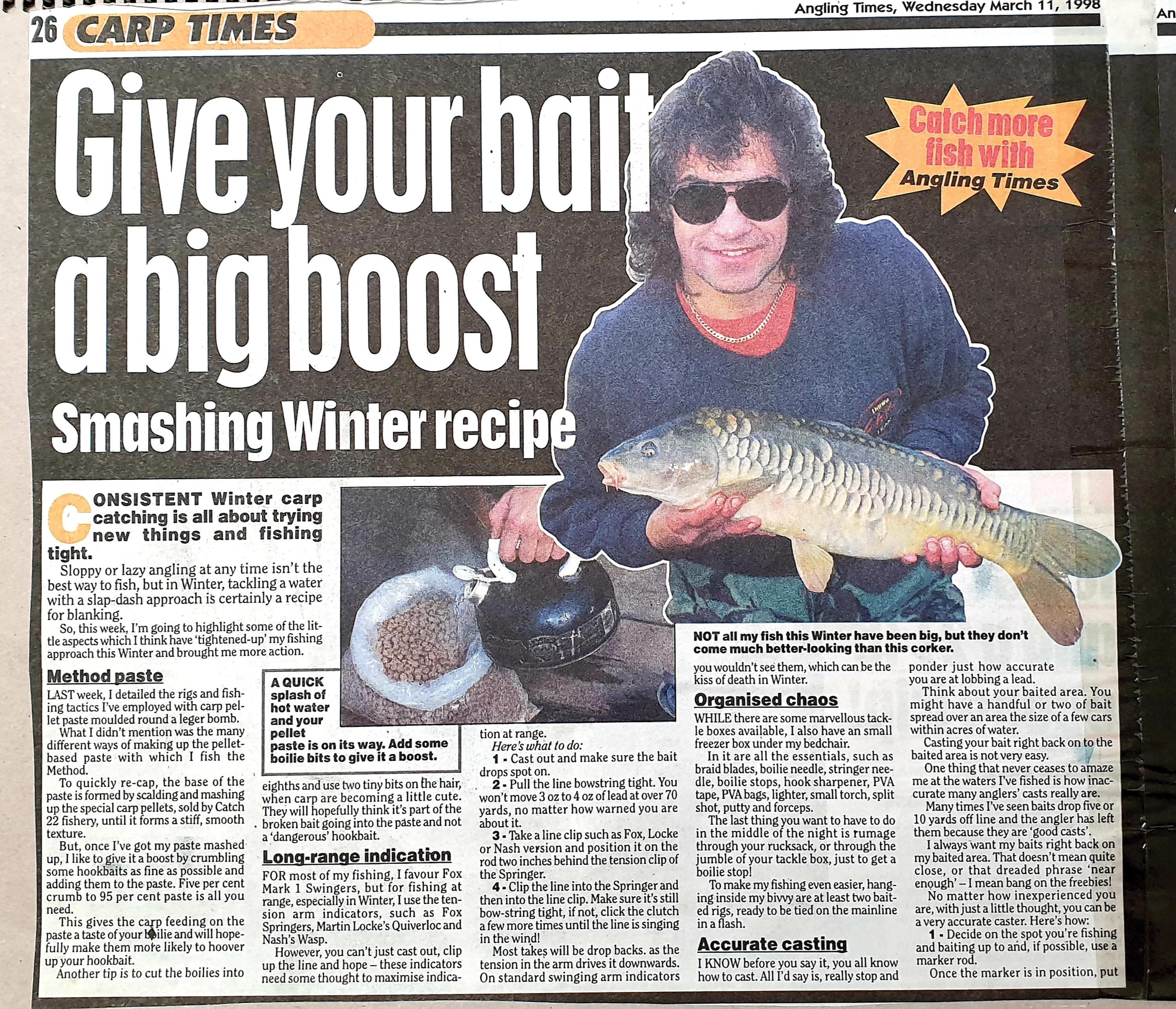
CARPOLOGY: Can you remember the first time you switched to using it - whether on ‘Catch’ or any other lake - and the impact it had on your results?
JULIAN CUNDIFF: “Being a collector, I keep all my written work and I can tell you precisely when that was: December 7th 1997. On the first trip with my ‘delicate’ approach, I was going to show those Norfolk boys how was done. They were chucking out these big lumps of trout pellet paste - the locals referred to it as ‘the dog turd’ method! How then, could I fail? It was freezing cold and there was no way those carp would fall for big lumps of paste surely…
“My first trip produced nothing but bream for me, whilst the locals were hauling on the pellet paste! I crept home, duly punished for my arrogance. I was back the next week and replaced the ball pellets in the PVA bag with trout pellets, and that produced just one carp, the ‘dog turders’ around me though, were still hauling! Finally, in mid-January 1998, on my third trip, I got on the pellet paste and for my next two years I used nothing else on there. I went from one carp in a weekend to twenty-two in a day… my catches were transformed.”
CARPOLOGY: Did you use it all year round? Can you remember whose pellets you made the paste from?
JULIAN CUNDIFF: “Catch 22 was always a winter-only venue for me during the couple of years I fished it, so from mid-November to late March it was the only method I used. The pellets were simply the on-site ones the fishery fed every week. You could buy them on the bank from Phil Gray, the bailiff at the time. There was nothing unusual about them, but the carp were addicted… I saw Phil in the boat scattering them all around the lake and the carp would bosh out like gulls behind a trawler!”
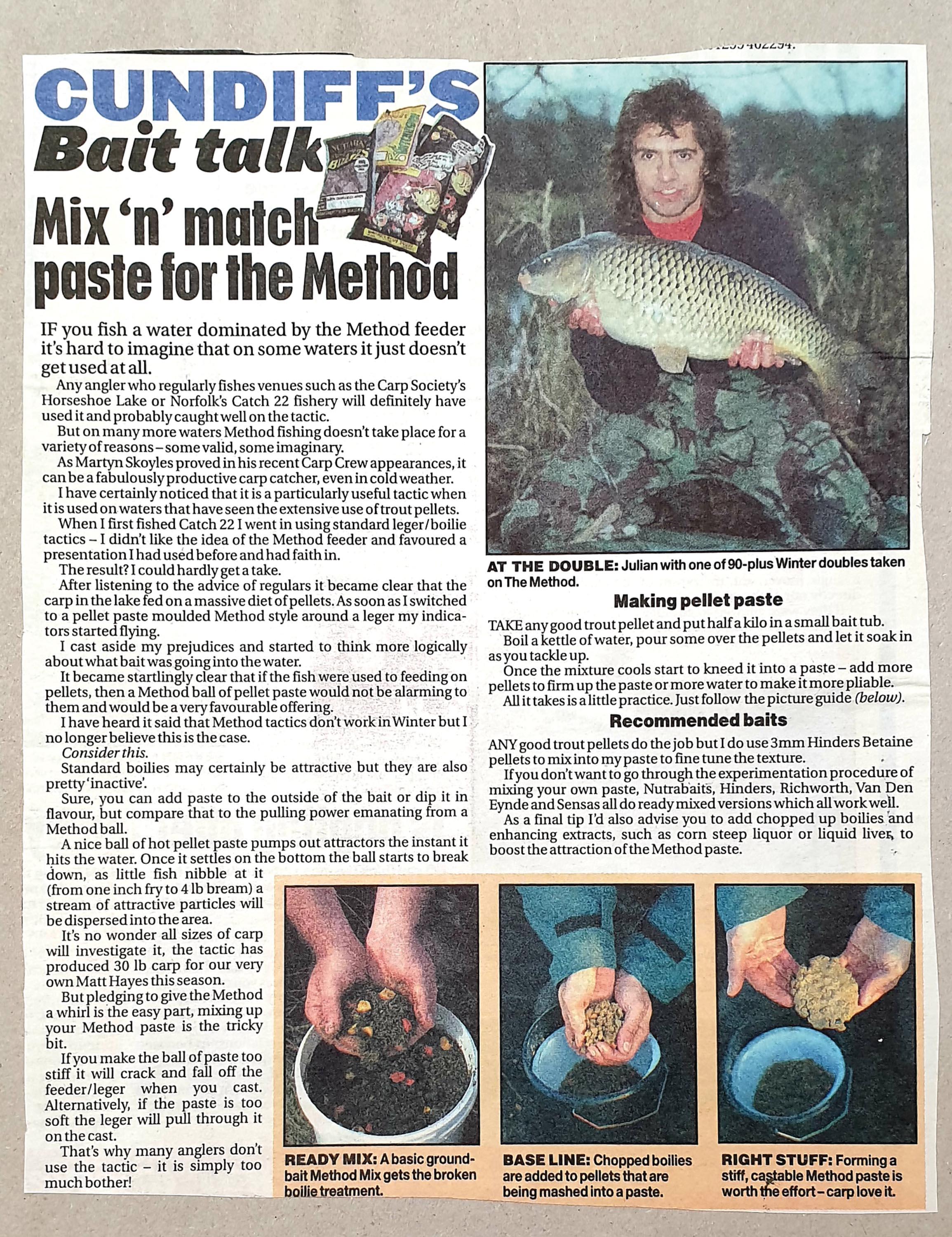
CARPOLOGY: Did the paste have to be a particular consistency? And what were you using for a hookbait?
JULIAN CUNDIFF: “To start with, it took a little while to get right, but I did find the trick was not to make too much at a time. I’d use a small Drennan bait box and take three handfuls of pellet. I’d add scalding hot water and give them ten minutes. I soon had that sorted and found that by adding some trout pellet crumb it worked even better. I’d make the paste as normal, squeeze it around the lead, but then dip the ‘turd’ in a separate tub containing ground pellet… like a boilie crumb. I’d then squeeze it again to get the crumb to stick before whacking it out - this was a definite edge. Hookbait-wise I started with a bright bottom bait, then a fishmeal, and finally a trout pellet. I’d coat four sides of the pellet in varnish to harden it. Each end would be left clean and then, once dry, I’d add a light smear of fish oil.This would make them smell beautiful - to carp anyway! - and they’d last a lot longer. I’d mount them on braided Hairs, but on monofilament hooklengths.”
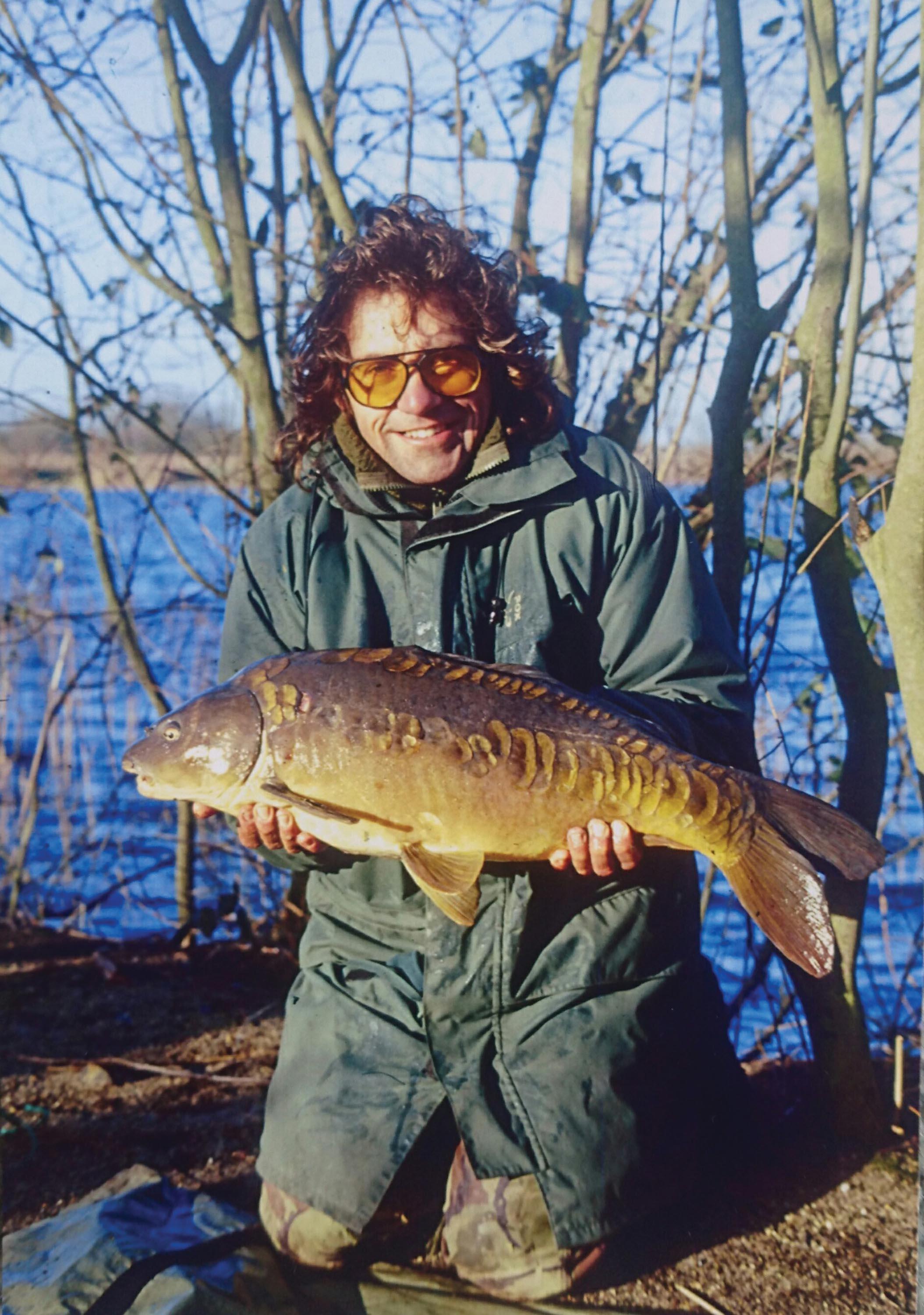
CARPOLOGY: Did you ever use it with a Method feeder or just moulded around a lead?
JULIAN CUNDIFF: “One great lesson Andy Little taught me was that if a method or tactic works well, it’s often best simply to refine it, rather than change it. When I watched the locals, they were using balls that were orange- to tangerine-sized and believe me, there’s a limit to the range you can hit with those! I knew the carp came in close at night to feed, but in the day there were often many slow hours. Having seen carp head-and-shoulder in the day at 70 to 110yds, I was convinced they were moving out in the day and that we were short of them. I simply dropped to two-ounce leads, cut deep grooves in them with a sharp screwdriver and moulded the paste so that at most, they were egg-sized. This allowed me to fish comfortably at 70 yards-plus and I absolutely murdered it in the day; I never used the feeder at all.”
CARPOLOGY: Why did you stop using it?
JULIAN CUNDIFF: “Because I stopped fishing Catch 22! The venue was 196 miles from home and in an old VW Golf that was some trip. I loved the place, but it became very much a one-method-approach venue and there were only so many 12 to 17lb commons I wanted to catch. From one in a weekend to twenty-two in a day enough was enough and I moved on. My waters didn’t see much in the way of pellets, and boilies were king; trying to emulate it at home was just daft, so I did what I did best and returned to the boilie approach.”
The Ball Pellet Era
CARPOLOGY: Can you talk us through the ball-pellet era; when did you first get hold of them?
JULIAN CUNDIFF: “Although technically not ball pellets I guess, but as near as damn it, Nashy’s Micromass were the first I saw being used. Some Nash field-testers had it on Selby and you could watch the carp ripping the bottom up for it. Particles were banned. These though, were like hemp-sized boilies, but totally dissolved - very interesting! Nutrabaits brought them out in 1997 and I was hooked immediately - if you excuse the pun. I’m not sure who else did them, but I know that Mainline had something similar, Nash too. As far as I’m aware, they were manufactured by Clive Dietrich of Richworth fame, as most bait companies simply didn’t have the machinery to make them perhaps. Sadly, it was a short-lived era and a combination of quality - they’re notoriously hard to make with any consistency - and lack of demand killed the concept off. Punters wanted boilies, not something that dissolved, and they weren’t prepared to pay boilie-type prices for them. Ant Baits - Clive’s firm? - made me a stack in the early noughties, but as far as I’m aware, they’re long gone now - sadly!”
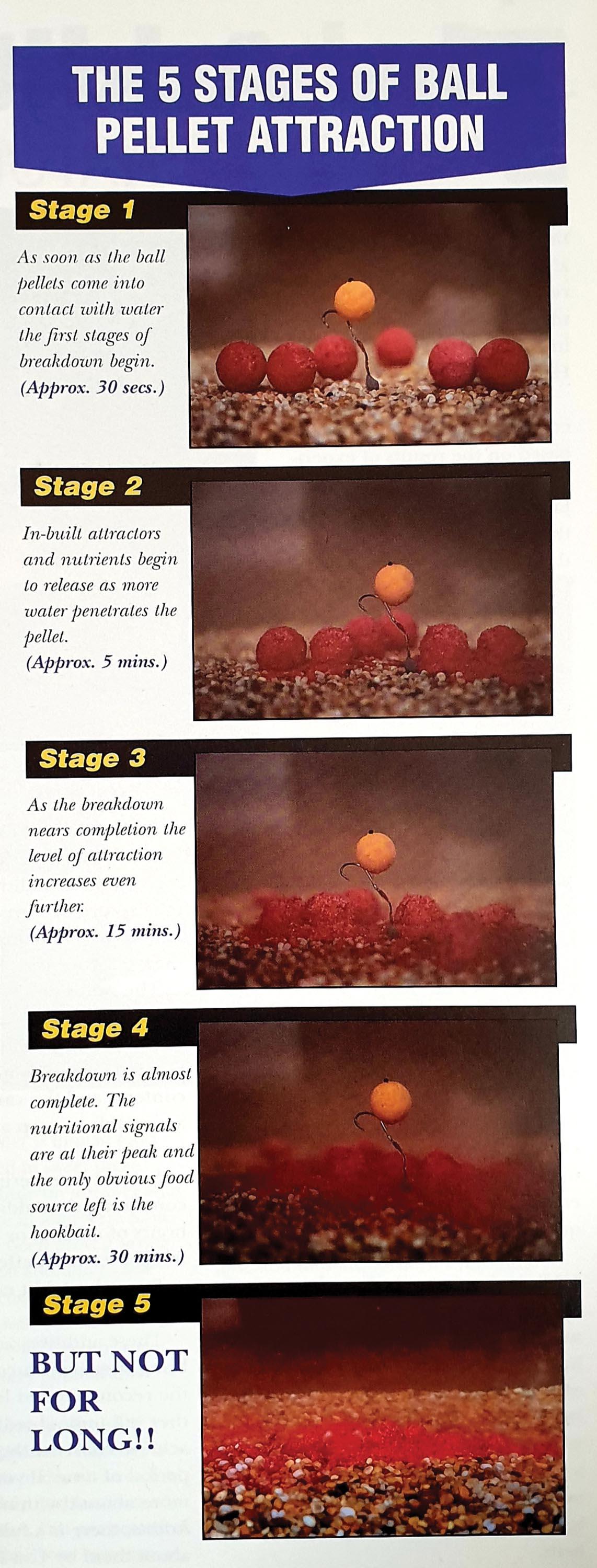
CARPOLOGY: What was the thinking behind them & what made them so effective?
JULIAN CUNDIFF: “Back in those days the Spomb wasn’t around and spods were still pretty crude. If you wanted to put out small feed items, or crumb or groundbait, it wasn’t easy. The thinking was that you could catapult, or stick out something that looked and flew like a boilie, but was actually crumb and groundbait… all that attraction and just a hookbait to get hold of, attached to a Series 2 or Ashima, that’s what made them so effective. I love fishing over bait, but on short sessions and overnighters, getting the balance right is so hard… too little and they don’t feed strongly enough to make mistakes; too much and I’m probably at work when they make that mistake. With ball pellets I’d usually fish a three-to-one ratio of ball pellet to boilie and it worked brilliantly. I’d lightly coat the ball pellets in salmon oil and this slowed the breakdown, but improved the attraction even more. For a couple of years, summer and winter alike, it was my go-to tactic, but as with most things, the public dictated its longevity and they didn’t recognise the advantages and so didn’t buy it, so it ended… unless someone out there knows different!”
